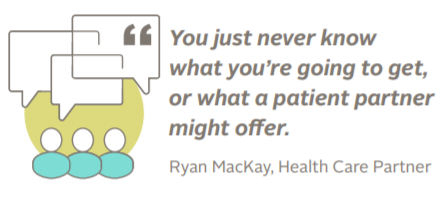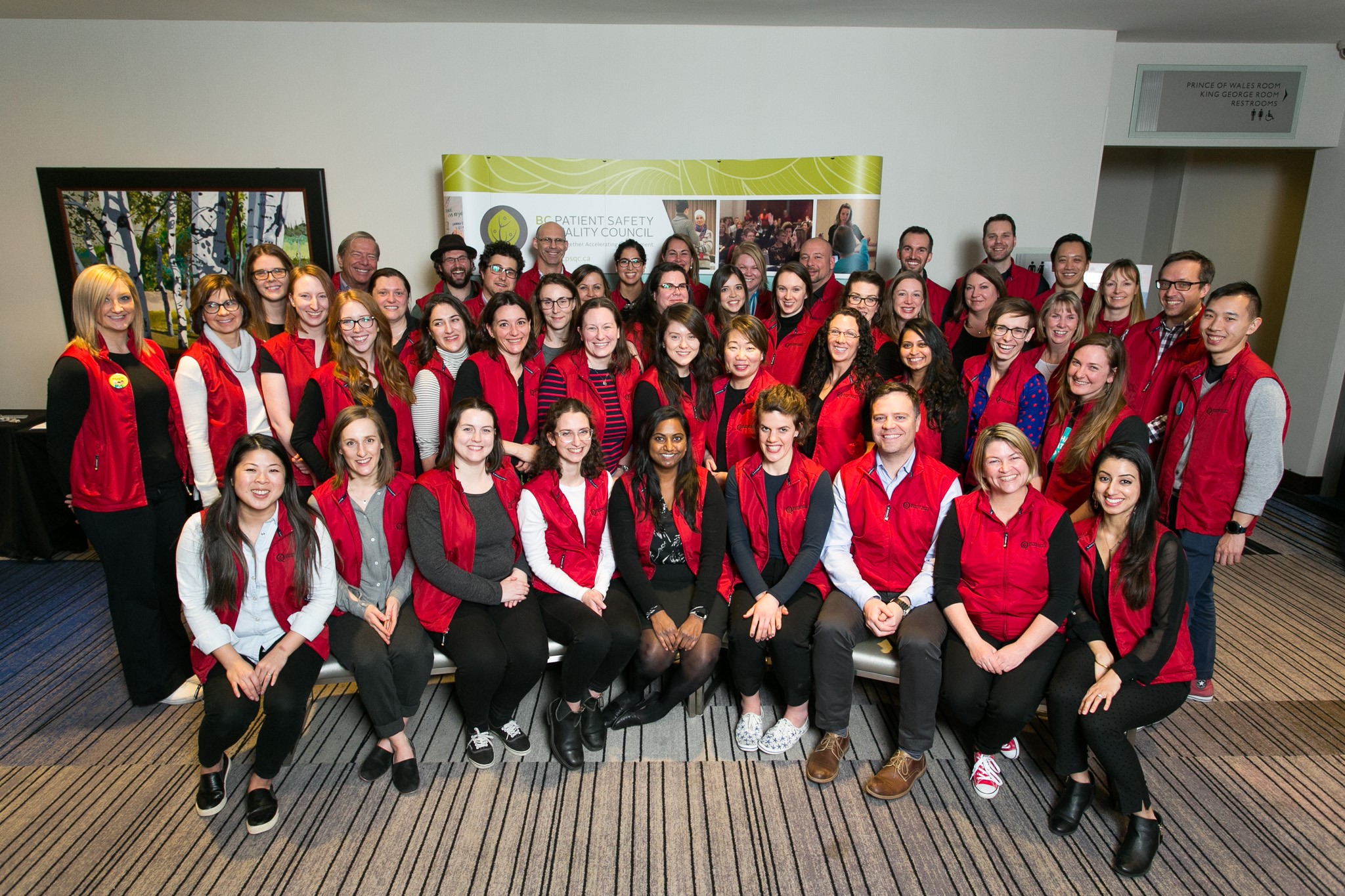Posted
Categories: Working Together for Better Health Care
In recent years, as the value of patient engagement has become more widely acknowledged, many organizations and hospitals have created designated staff positions to support and expand the practice in their facilities. At Burnaby Hospital, Ryan MacKay acts as the site’s Coordinator for Quality & Patient Experience by supporting efforts around quality improvement, virtual care and the integration of patient voices into all quality and operations work. “We’re trying to ensure there is a Patient Advisor in every operations meeting and involved in every new innovation project as a way to advance the culture of person- and family-centred care here,” he explained.

In addition to patient partners sitting on hospital operations management committees, Ryan works with PVN to find patient partners to join accreditation improvement efforts and Quality Walkabouts (senior leaders visiting wards to talk to staff about potential patient safety issues), review patient education materials, participate in hospital redevelopment committees and join various quality improvement project teams. “Having Ryan as a contact at Burnaby Hospital to help with the process, documents and share his experience has been key. It has been very helpful to have a local contact to help organize this,” shared Melissa Allan, an emergency physician at the hospital.
Patient Lens on Quality Improvement
Melissa is helping to scale up and spread local quality improvement efforts. She chairs the Medical Staff Associations’ Quality Improvement (QI) Subcommittee and runs a monthly “Burnaby Hospital QI Café” where staff present new ideas or updates on current quality improvement initiatives and receive feedback from colleagues and patients.
PVN patient partner Ron Hall participates in both endeavours and several others. “It was essential for us to have someone who can give a patient and community perspective involved too. Ron helps us to understand things from a non-medical view. Ron has participated as a full member on the subcommittee over the last year, reviewing and providing feedback on 16 Burnaby Hospital quality improvement projects,” shared Melissa. And according to Ron, the subcommittee has “Been excellent about having a patient partner on board, receptive to suggestions, questions and comments. There is a true desire to have us involved and help them make projects more patient- and family-centred.”
Focus On Patient Experience
A recent Burnaby Hospital QI Café session focused on how staff can optimally involve patient partners in projects. Ryan and Ron shared advice and strategies on how to ask and learn from patient experiences, with Ron drawing on knowledge and experiences from his former work in the public education system to acknowledge that even small changes in big systems can be challenging. He said that aligning proposed changes with true patient needs can help change efforts gain traction and stick. “It’s a common question I like to hear – ‘Who have you talked to in terms of patients and families and what is their response to what’s going on?’” Ron also stressed the importance of having a caring and responsive system, and he urges quality improvement teams to think about how their project or proposed change will allow staff to continue providing compassionate person- and family-centred care.
He acknowledges this can be hard to do in high-stress environments and situations. “Last year is a great example of staff needing to be caring and responsive even though they are overwhelmed,” said Ron, noting how every care interaction, negative or positive, can affect a patient’s experience, feelings and overall health. “If the first person a patient contacts is at an info desk, and they are kind and friendly, then they’re going to be better set up for the rest of their stay.”
Encouraging quality improvement teams to prioritize staff’s ability to connect with patients compassionately is one way Ron hopes to advance person- and family-centred care, and Ryan is seeing the impact of those efforts. “Ron has transformed the tone of our quality endeavours. His participation has enriched our perspectives and put us on a better footing,” shared Ryan. Reflections & Lessons Learned When asked about advice for others embarking on patient engagement partnerships, Melissa stressed the importance of meeting prior to “the meeting” to review mutual expectations and the level of engagement.
Melissa shared: “Meet before to review documents and get to know each other. Create opportunities to discuss expectations. Create space in meetings and discussions for patient partners to share their perspective. Understand that there are many perspectives and views are not homogenous amongst us or patients.”
Ron shared similar advice, noting that it can take some time for a patient partner to understand the health care language, acronyms and metrics used in meetings. “Including the acronyms that will be used in a meeting in the agenda has been helpful. I also appreciate it when the chair gives me a heads-up ahead of time to say, ‘Ron, we’d really like your feedback on these specific parts.’ Then I can pay close attention to those sections – not all 50 parts of the meeting.” Ryan encourages health care teams to be receptive to the new ways of thinking that patient partners bring to the table, noting that there are often unexpected benefits or outcomes of working together. “You just never know what you’re going to get, or what a patient partner might offer. Be ready and open to learn whatever there is to learn,” he said.
Reflecting on the sum of his patient partner experiences to date, Ron notes the positive two way learning he has witnessed. “It’s been a highlight to understand the health care system from inside, not just the outside. And such a positive to see that my perspective from the outside is now sitting on the inside. I am certainly learning a lot and hope other people have learned from me and my different viewpoint, too.”
This story was featured in our 2020/21 Annual Report. Read more like it here.


